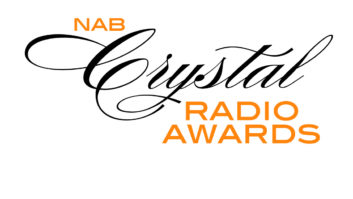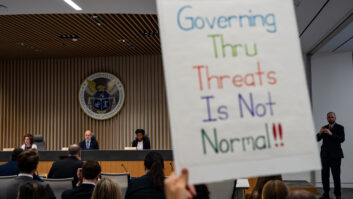In 2012, when traditional radio is competing for audience and advertising against Internet audio services, satellite radio and audio programming delivered on a plethora of mobile devices, the National Association of Broadcasters says it’s long overdue for the FCC to relax the local radio ownership rules, something Clear Channel and CBS advocate as well.
Media advocacy groups disagree, saying the commission should leave the limits in place or further tighten them.
When Congress passed the Telecommunications Act that contained radio’s new ownership limits in 1996, none of these new competitors existed, argues NAB, which says the local radio ownership caps and AM/FM subcaps have got to go.
In comments filed with the commission for its media ownership proceeding, NAB says the current caps, tiered by market size, as well as the AM/FM subcaps that limit how many stations of one service a group can own in a market can no longer be justified and no longer serve the agency’s diversity policy goals.
In markets with 45 or more stations, the existing rules limit a single entity to owning up to eight commercial stations, but no more than five can be in the same service (AM or FM).
Radio stations now compete for audience share and advertising revenues not only against other stations but also with programming delivered by Internet radio, satellite radio and on various mobile devices. At the least, the FCC should enlarge its definition of a local market to include these new voices, NAB states.
To say that the local radio ownership caps remain necessary “to promote competition in these market circumstances simply makes no sense,” argued CBS, which adds: “By maintaining outmoded restrictions on the number of over-the-air stations that can be owned in a local market, the commission’s current regulatory regime also singles out radio alone for regulation.”
The FCC has not proposed changing the local radio ownership limits.
The commission did conclude in its Notice of Proposed Rulemaking that the AM/FM subcaps are still necessary to protect competition in local radio markets because of technical and marketplace differences between AM and FM stations, apparently assuming that AM stations are not competitive, NAB wrote.
The broadcast lobbying organization says this assumption isn’t valid and quotes BIA figures cited by Clear Channel in its filing on the topic. “Not only are five AM stations ranked in the top 10 radio stations in the country by revenue, but 187 AM stations are ranked in the top five radio stations in their local markets in terms of audience share across the day,” writes NAB. Recent FCC rule changes allowing AMs to rebroadcast on FM translators, and the growth of digital audio broadcasting, HD Radio technology and online streaming all provide new opportunities for AMs to compensate for technical difficulties relative to FM stations and enhance their already strong presence in the audio marketplace, NAB asserts.
Elimination of the AM/FM subcaps would provide increased flexibility to owners without increasing the number of stations that a single entity could own in any local market, said NAB.
The newspaper/broadcast cross-ownership limits should be eliminated, because “the assumed harms from common ownership of newspaper and broadcast facilities cannot be proven,” writes NAB, which also agrees with the FCC’s proposal to eliminate the radio/TV cross-ownership rule and help level the playing field for local broadcasters and multichannel video and audio distributors.
Groups such as Free Press, the Alliance for Women in Media and musicFirst urged the commission to refrain from further deregulating broadcasters, saying that while the FCC has proposed relaxing the newspaper-broadcast cross ownership rule and eliminating the radio-television cross ownership rule, the agency has not assessed the impact such changes would have on levels of female and minority station ownership.
As for the radio ownership limits specifically, musicFirst argues the FCC should tighten the limits, “to reverse the rampant homogenization and impoverishment of radio programming in recent decades.”







